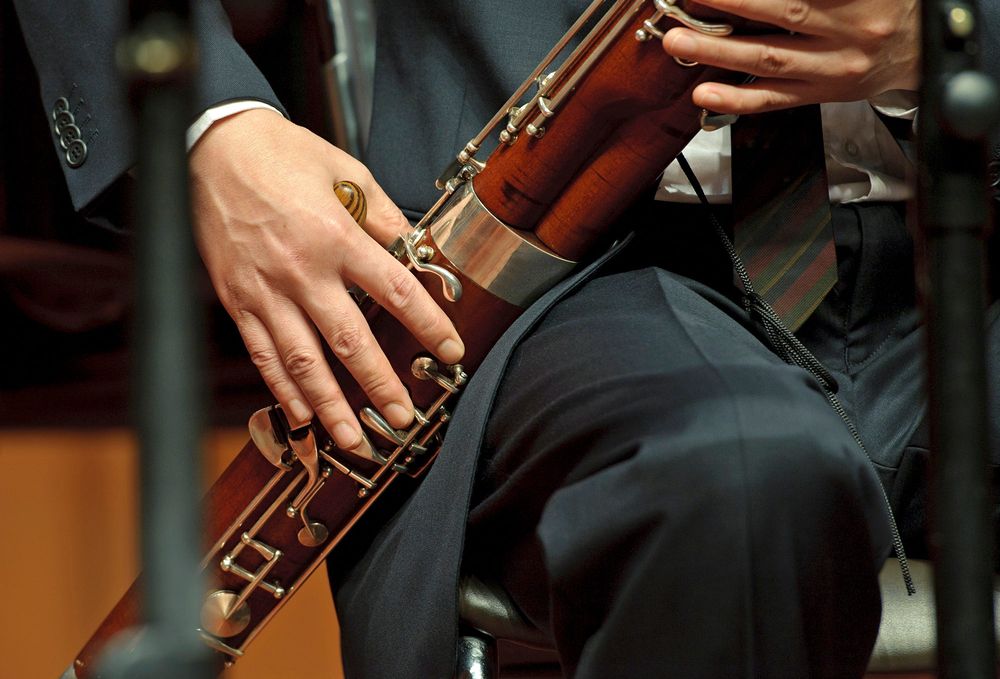5. Finger Technique and Playing
The bassoon has tone holes and (around 24) keys, which, depending on the model, are made of nickel silver, silver-plated, or hard nickel-plated. Additionally, there's a handrest at the boot. This ensures that the fingers (right hand) maintain their independent movement because they have to work the bassoon both "front and back" - and that involves unfamiliarly wide stretches.
This applies to the left hand as well. It operates all the tone holes and keys of the wing joint, the long joint, and the bell joint. Here, the thumbs do the heavy lifting. In a professional setup, they handle almost as many keys as all the other fingers combined. To ease this heavy load, the wing and long joint are held together with a connector, providing a stable fingering technique for these three bassoon parts. Unlike other woodwind instruments (where the thumb typically operates just one octave key), the bassoon's fingering extends to both sides of the instrument.
To simplify some of the fingering stretches on the bassoon, certain keys are equipped with rollers (depending on the model). It's highly recommended not to skimp on these aids.
Beginner bassoonists should seek advice from their teacher in this area.
The whole setup of keys, rollers, springs, and their attachment is simply referred to as the "mechanism."
The interior of the wing joint and the right boot bore is typically lined with rubber to protect the wood from the condensation that forms continuously while playing, running down the interior walls to the "U-bend" of the boot.
Due to the considerable length of the bassoon, the tone holes also need to be spaced farther apart. With a standard 1:1 bore (like a recorder), even the largest hand couldn't manage the wide finger stretches. That's why some tone hole bores in the wing and boot are angled to allow for playable fingering. The tone holes are lined with rubber sleeves, also for moisture protection of the wood. Depending on the build, bassoon makers let these sleeves protrude around 1 mm into the tube's interior. This prevents condensation from entering the keyholes. The left (boot) side with the long joint (also called the boot joint) and the bell joint (also called the boot) is not directly exposed to the aforementioned moisture.




